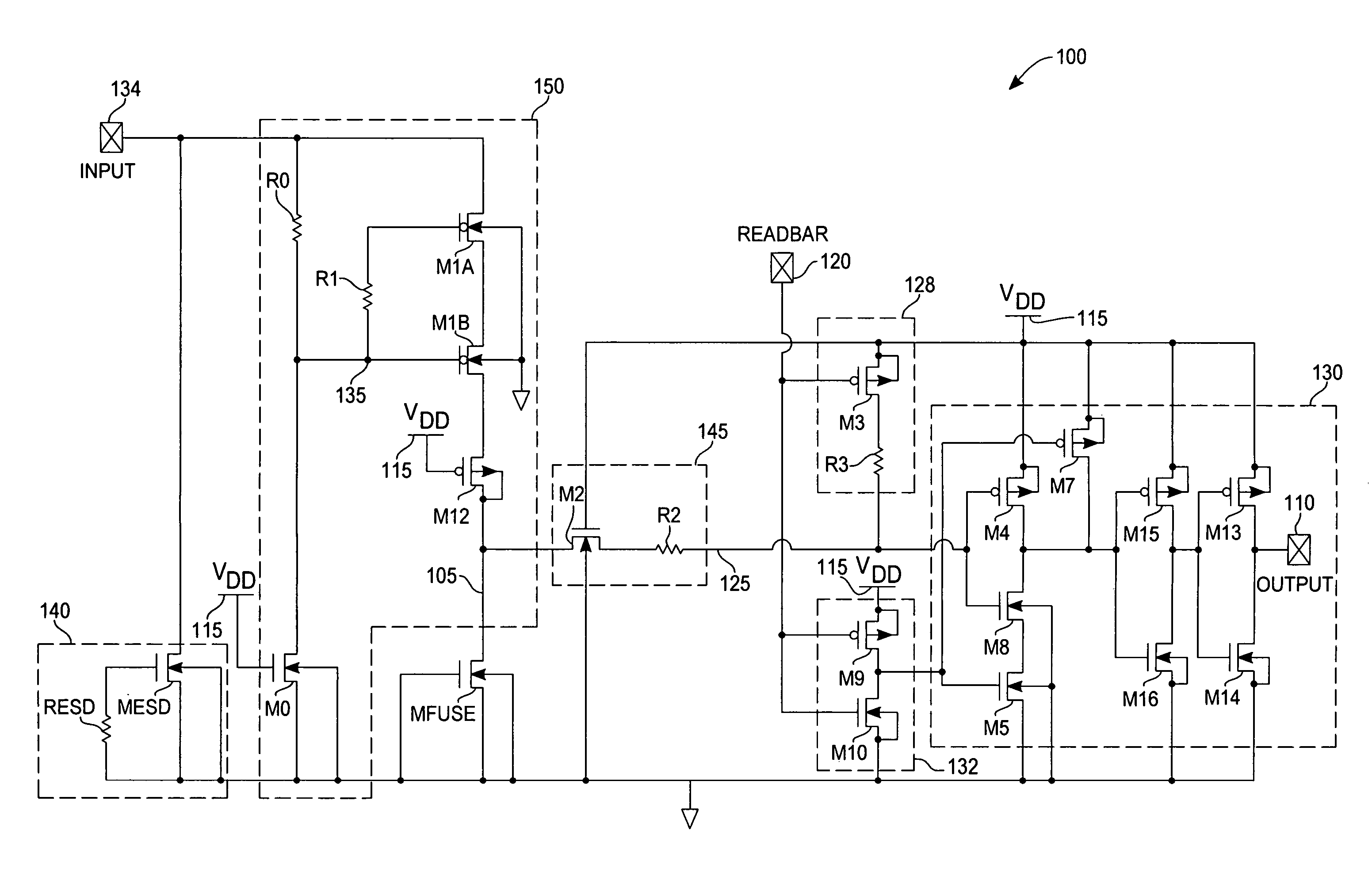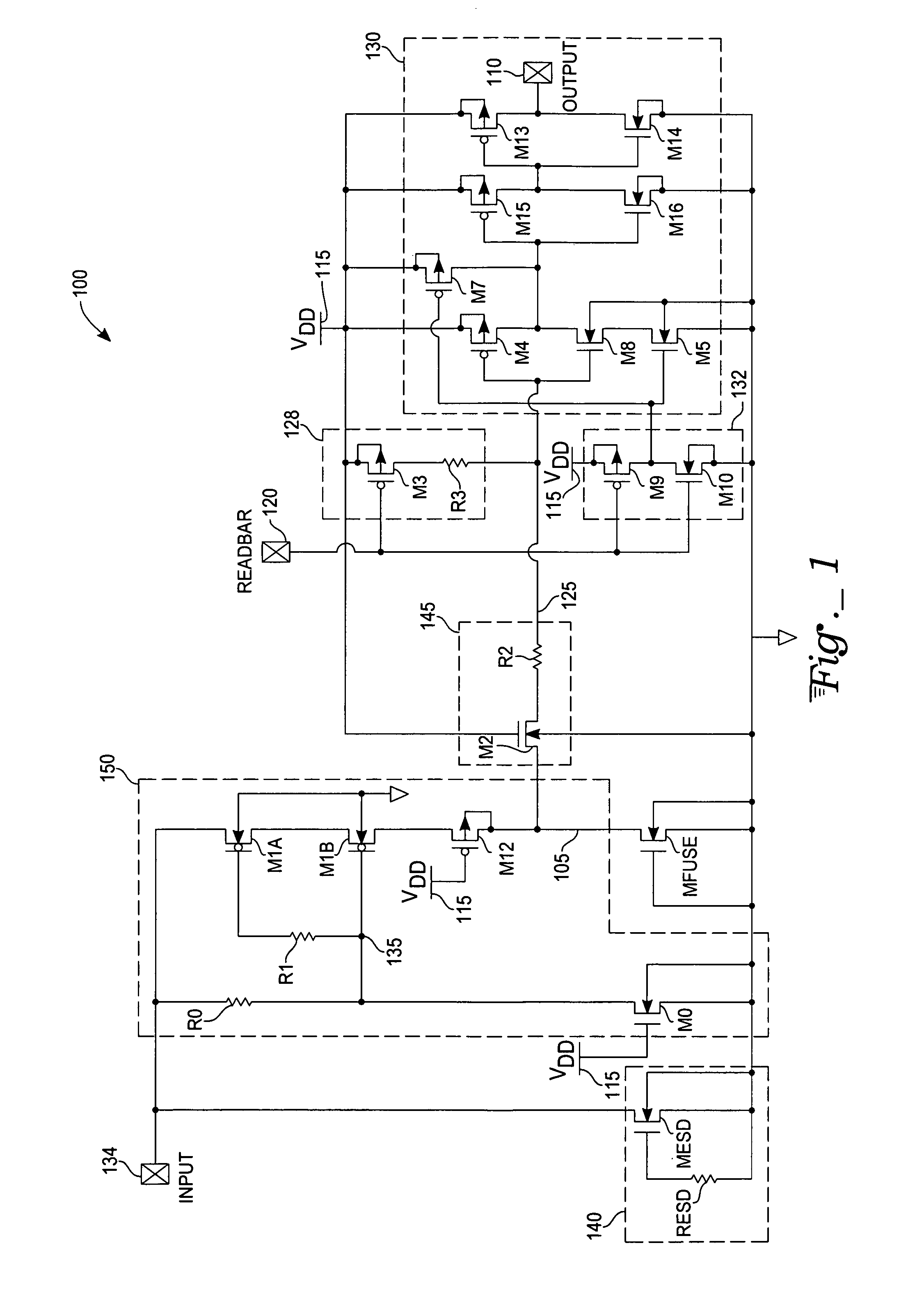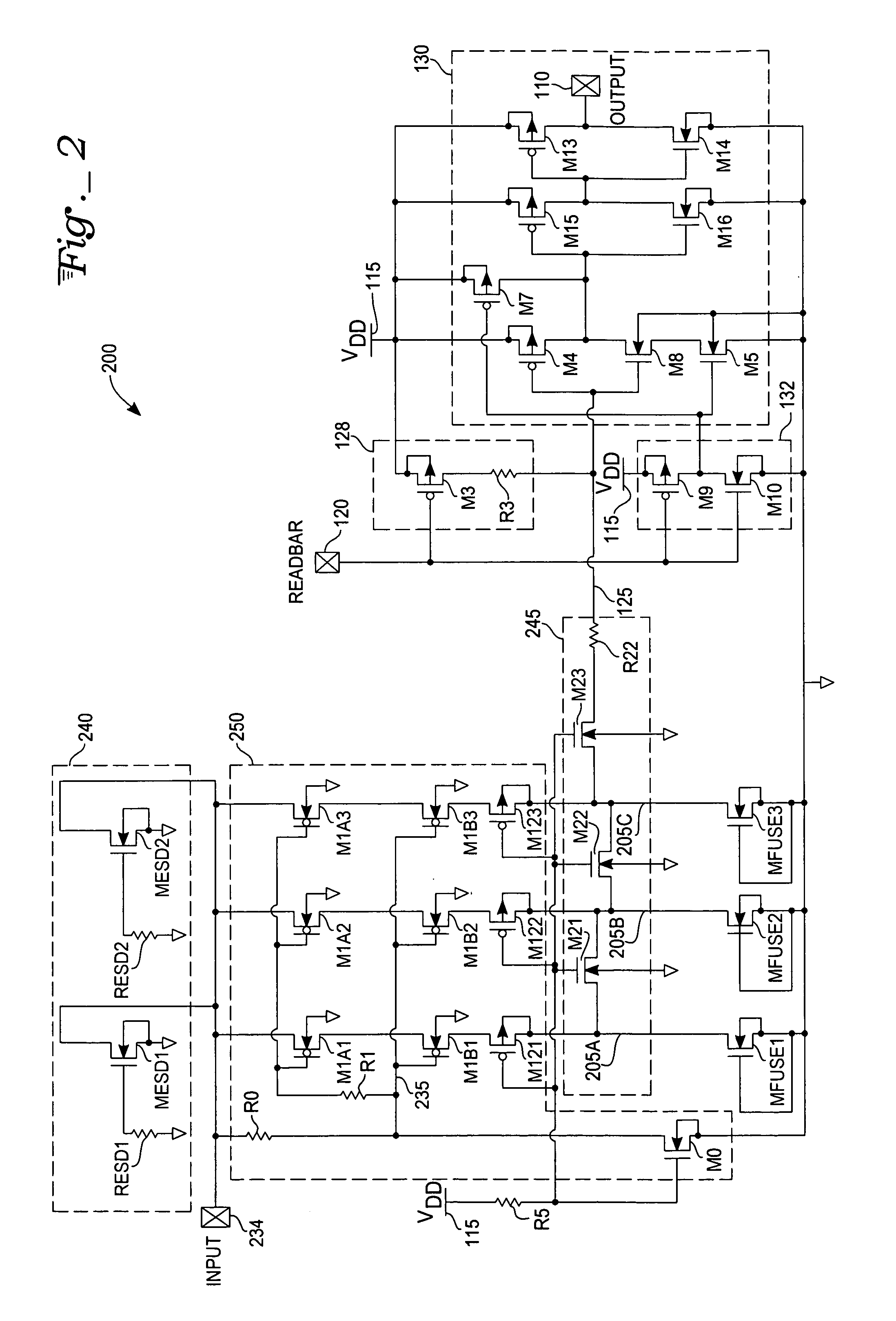Antifuse programming, protection, and sensing device
a sensing device and anti-fuse technology, applied in the direction of static storage, electrical equipment, instruments, etc., can solve the problem of very low power consumption
- Summary
- Abstract
- Description
- Claims
- Application Information
AI Technical Summary
Benefits of technology
Problems solved by technology
Method used
Image
Examples
Embodiment Construction
[0009]With reference to FIG. 1, an exemplary antifuse programming, protection, and sensing device contains an antifuse MFUSE. The antifuse MFUSE is a thin oxide NMOS transistor. The antifuse MFUSE is fabricated with a gate node, a source node, and a body node tied to ground level so that a conduction path through the antifuse MFUSE, from a drain node to ground, is highly resistive. In this configuration the antifuse MFUSE is considered an open circuit.
[0010]The antifuse MFUSE is connected between a VFUSE node 105 and ground. With a sufficiently high voltage applied to a drain of the antifuse MFUSE, it is damaged (blown) producing a low resistance path from the drain of the VFUSE node 105 to ground. In this state the antifuse MFUSE can be considered a short circuit.
[0011]A sense amplifier 130, containing a NAND gate structure M4, M8, M5, and M7 and a buffer M15, M16, M13, and M14, is used to sense the antifuse MFUSE and determine if it has been blown or not. An OUTPUT pad 110 communi...
PUM
 Login to View More
Login to View More Abstract
Description
Claims
Application Information
 Login to View More
Login to View More - R&D
- Intellectual Property
- Life Sciences
- Materials
- Tech Scout
- Unparalleled Data Quality
- Higher Quality Content
- 60% Fewer Hallucinations
Browse by: Latest US Patents, China's latest patents, Technical Efficacy Thesaurus, Application Domain, Technology Topic, Popular Technical Reports.
© 2025 PatSnap. All rights reserved.Legal|Privacy policy|Modern Slavery Act Transparency Statement|Sitemap|About US| Contact US: help@patsnap.com



